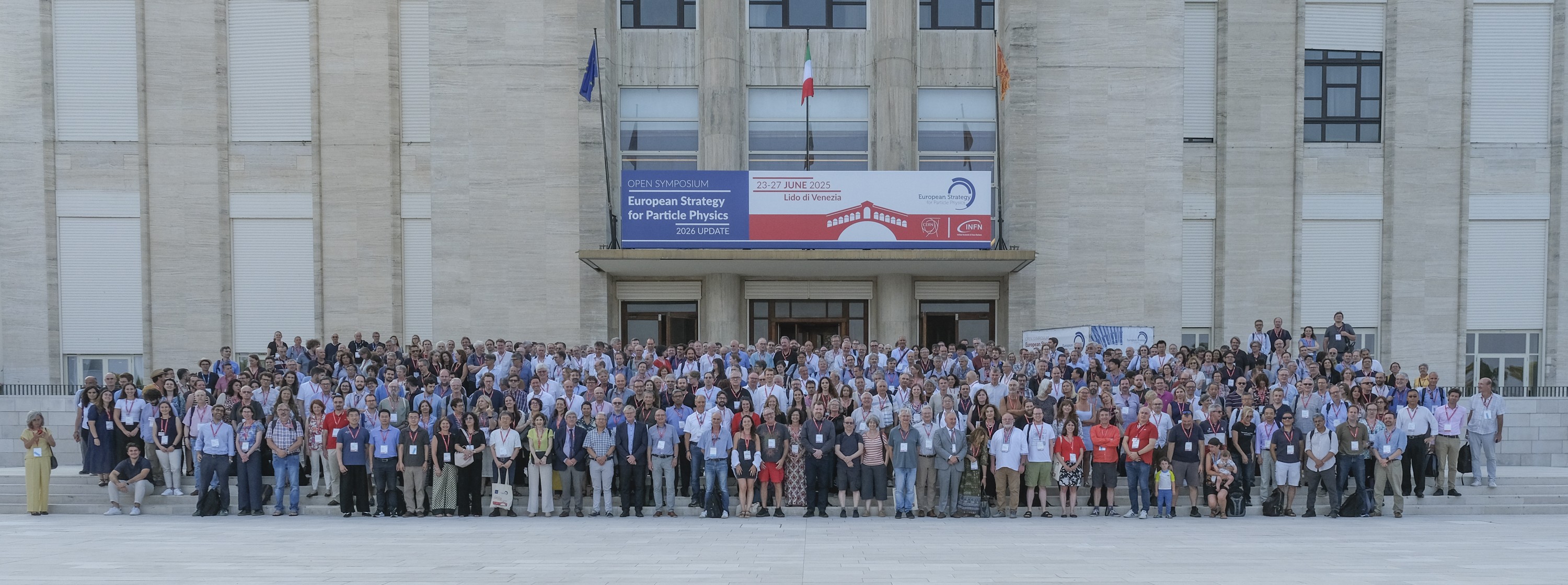
Marking a major step in shaping the future of particle physics, the Physics Briefing Book for the 2026 update of the European Strategy for Particle Physics (ESPP) was released on 2 October. The document synthesises all the current input for the community-driven ESPP process and provides the foundation, alongside the final national input and an assessment of large accelerator projects by a dedicated working group, for the European Strategy Group (ESG) to formulate its recommendations in December.
The ESPP 2026 update, which was launched by the CERN Council in March 2024, called upon the particle physics community to develop a visionary and concrete plan that greatly advances knowledge in fundamental physics through the realisation of the next flagship project at CERN. A total of 266 written submissions, ranging from individual to national perspectives, were received. These formed the basis of rich discussions at an Open Symposium held in Venice from 23 to 27 June 2025, which brought together more than 600 physicists from almost 40 countries.

The Briefing Book, compiled by experts in the Physics Preparatory Group (PPG), distils these discussions and all the community input received so far into a single document that has been handed to the ESG. The document does not prescribe a single path forward but evaluates the scientific potential of different facilities and experiments. Following the recommendations of the ESPP 2020 update, it prioritises the need for an electron-positron collider dedicated to precision Higgs boson studies and, in the longer term, an energy-frontier collider.
Arranged in 12 chapters, the Briefing Book summarises the outstanding questions across the various physics areas, together with a discussion of the potential of the different proposed colliders and other experiments to address them. The differences in the physics potential between the various collider options, along with the technical readiness, risks, timescales and costs, will be reviewed to enable the ESG to produce its final recommendations. Crucially, the CERN Council requested that the community indicate not only the scientifically most attractive option, but also alternative options to be pursued if the chosen preferred plan turns out not to be feasible or competitive.
"We wish to deeply thank the co-conveners, scientific secretaries and all members of the PPG working groups for their hard work and dedication in summarising the main messages from the many strategy input submissions and the discussions at the Open Symposium in this book," says Karl Jakobs, Strategy Secretary, University of Freiburg. "As we have seen from the input so far, the ESSP 2026 update has revealed a vibrant scientific landscape across high-energy physics and a community united in its desire for a future flagship collider at CERN."
The next step towards updating the ESPP is the submission of the final national input, with a deadline of 14 November. The ESG project-assessment working group will release its findings on 17 October such that they can be taken into account. The final drafting session of the Strategy update will then take place from 1 to 5 December at Monte Verità Ascona, Switzerland, where the community recommendations will be finalised. These will be presented to the CERN Council in March 2026 and discussed at a dedicated meeting of the CERN Council in May 2026 in Budapest.






